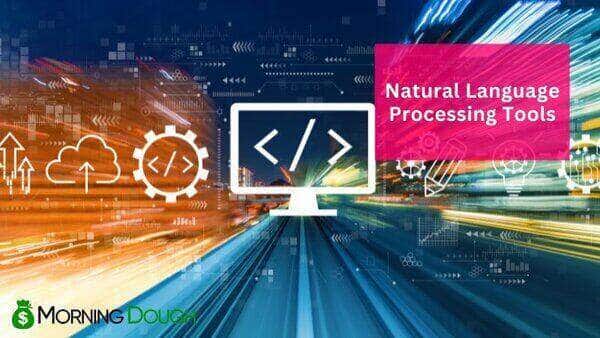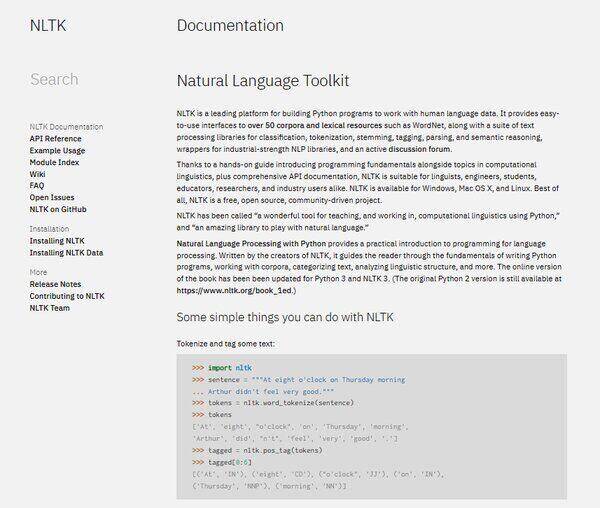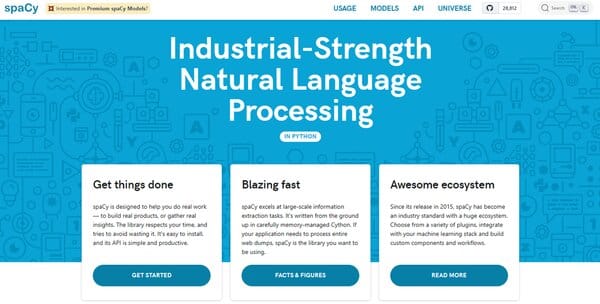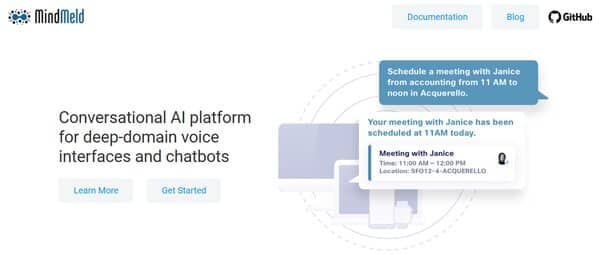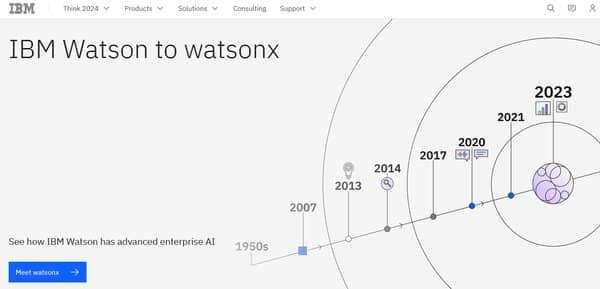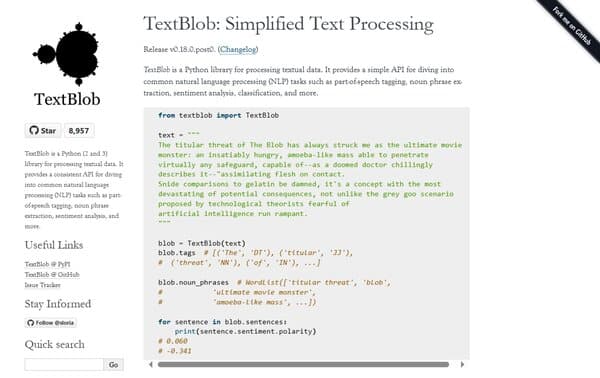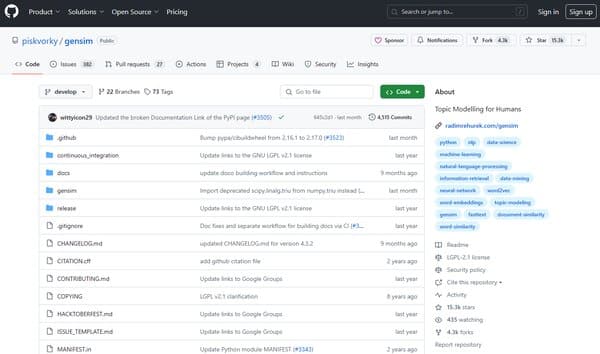12 Best Natural Language Processing Tools
Natural Language Processing Tools
Natural language processing tools are revolutionizing the way we interact with technology, enabling machines to understand and respond to human language in a meaningful way. These tools are integral to developing applications that range from customer service chatbots to sophisticated data analysis software. By leveraging AI and machine learning, natural language processing tools facilitate a deeper interaction between humans and machines, enhancing the user experience across various digital platforms. As businesses and consumers generate vast amounts of text data daily, the ability to analyze and interpret this data efficiently is becoming increasingly crucial. Natural language processing tools not only automate mundane tasks but also provide valuable insights that can drive strategic business decisions.
The evolution of the natural language processing tools has been marked by significant advancements in AI technologies, which have expanded their capabilities and applications. Today, they are used in diverse fields such as healthcare for patient management systems, in finance for real-time transaction monitoring, and in retail for enhancing customer engagement. The demand for natural language processing tools is reflected in their market growth, with the industry seeing substantial investment and innovation, aiming to make interactions more human-like and less mechanical.
The Need for Natural Language Processing Tools
The need for natural language processing tools stems from the vast and growing amount of unstructured text data generated across various digital platforms. Businesses and organizations face the challenge of extracting meaningful information from this data deluge to make informed decisions and improve operational efficiencies. Natural language processing tools address this need by providing the technology to analyze, understand, and derive insights from text data efficiently. These tools are crucial for automating complex processes such as sentiment analysis, topic detection, and language translation, which are integral to enhancing customer experiences and streamlining business operations.
Moreover, as global digitalization continues to evolve, the interaction between humans and machines through natural language is becoming a fundamental aspect of modern software applications. This interaction enhances the accessibility and usability of technology, making it imperative for businesses to integrate natural language processing tools into their systems. These tools not only help in handling the increasing customer service demands efficiently but also play a crucial role in managing and analyzing large volumes of data in real-time. By enabling more effective communication strategies and providing deeper analytical capabilities, natural language processing tools are essential for businesses looking to leverage AI for competitive advantage and operational excellence.
12 Best Natural Language Processing Tools
- Natural Language Toolkit
- MonkeyLearn
- spaCy
- Stanford CoreNLP
- MindMeld
- Amazon Comprehend
- OpenAI
- Microsoft Azure
- Google Cloud
- IBM Watson
- TextBlob
- GenSim
How does Natural Language Processing Tools work?
Natural Language Processing tools are advanced software technologies that enable machines to understand, interpret, and generate human language. At the core of NLP is the ability to process and analyze large amounts of natural language data. NLP tools work by converting text into a form that computers can understand. This involves several key processes such as tokenization, where text is split into words or phrases, part-of-speech tagging, which identifies each word’s function in a sentence, and parsing, which analyzes the grammatical structure of sentences.
NLP tools also employ machine learning techniques to improve their understanding over time. They are trained on large datasets to recognize patterns and nuances in language, including slang and colloquial expressions. This training allows NLP tools to perform tasks such as sentiment analysis, where the tool determines the emotional tone behind a text, or entity recognition, which involves identifying and categorizing key elements like names, places, and organizations within the text.
How to choose a Natural Language Processing Tool?
Choosing the right Natural Language Processing tool involves considering several important factors that align with your specific needs. The first step is to define the primary purpose of the NLP tool. Whether it’s for sentiment analysis, chatbot functionality, customer service automation, or data extraction, the intended use will guide your selection process.
The complexity and volume of the data you intend to process also play a crucial role. The natural language processing tools vary in their ability to handle large datasets or complex linguistic structures. Therefore, assessing the tool’s scalability and performance under different data loads is essential.
Another critical factor is the languages supported by the NLP tool. If you need to process data in multiple languages, look for a tool that has strong multilingual support and can accurately handle language-specific nuances.
Integration capabilities with existing systems are also important. The NLP tool should easily integrate with your current software infrastructure, including data management systems and analytics platforms. This ensures a smooth workflow and allows you to leverage your existing technological investments.
Lastly, consider the ease of use and the level of technical support provided. A natural language processing tool with an intuitive interface and comprehensive documentation can reduce the learning curve and enhance productivity. Additionally, responsive customer support can be invaluable when you encounter issues or require guidance on how to maximize the tool’s potential.
Natural Language Processing Tool
1. Natural Language Toolkit
The Natural Language Toolkit, commonly known as NLTK, is a comprehensive suite of libraries and programs for symbolic and statistical natural language processing (NLP) for the Python programming language. This natural language processing tool has been developed to provide an accessible and efficient platform for handling and analyzing human language data. NLTK is widely recognized for its versatility and ease of use, making it a popular choice among academics, researchers, and developers in the field of computational linguistics and natural language processing. It serves as a practical tool for teaching and working in computational linguistics using Python, and it supports many NLP tasks, including tokenization, stemming, tagging, parsing, and semantic reasoning, taking it to the top of the list of the natural language processing tools.
What does Natural Language Toolkit do?
The Natural Language Toolkit facilitates a wide array of natural language processing tasks. It allows users to work with human language data in various forms, from basic operations like tokenizing texts into words and sentences to more complex processes such as part-of-speech tagging, named entity recognition, and sentiment analysis. NLTK provides interfaces to over 50 corpora and lexical resources such as WordNet, along with a suite of text processing libraries for classification, tokenization, stemming, tagging, parsing, and semantic reasoning. It also offers tools for statistical machine learning, which can be applied to a broad range of NLP tasks. By providing a comprehensive toolkit for the Python programming language, NLTK enables the development of applications that can analyze, understand, and generate human language.
Natural Language Toolkit Key Features
Extensive Corpus Collection: NLTK includes a vast collection of text corpora and lexical resources, which are essential for training and testing NLP models. This feature provides users with access to a wide range of linguistic data, from classical literature to contemporary web and social media text.
Powerful Text Processing Libraries: The toolkit is equipped with libraries that support various text processing tasks, such as tokenization, stemming, tagging, and parsing. These libraries enable users to break down and understand the structure of text, facilitating deeper linguistic analysis and understanding.
Support for Classification and Machine Learning: NLTK integrates with Python’s machine learning libraries, allowing for the implementation of algorithms for text classification, sentiment analysis, and other machine learning tasks. This feature makes it possible to develop sophisticated models that can interpret human language in nuanced ways.
Interactive Demonstrations and Educational Resources: One of the key strengths of NLTK is its focus on education and research. The toolkit includes interactive demonstrations and extensive documentation, making it an invaluable resource for students and researchers new to NLP.
Active Community and Development: NLTK benefits from a large and active community of users and contributors. This vibrant community ensures the toolkit is continually updated with new features and improvements, keeping it at the forefront of NLP research and application.
2. MonkeyLearn
MonkeyLearn is a versatile platform designed to streamline the process of text analytics by providing tools for cleaning, labeling, and visualizing customer feedback all in one centralized location. Utilizing advanced artificial intelligence, MonkeyLearn offers an all-in-one text analysis and data visualization studio that enables users to gain instant insights from their data. The platform supports a variety of data inputs and allows for the creation of custom charts and visualizations, offering a fast and intuitive user experience. Users can choose from pre-trained machine learning models or create and train their own without needing to write code, making it accessible for non-technical users to perform complex data analysis tasks.
What does MonkeyLearn do?
MonkeyLearn excels in automating the analysis of text data, simplifying the process of extracting actionable insights from various sources of feedback. The tool allows users to import their datasets, define custom tags, and train models through a straightforward user interface. It is equipped with templates tailored for different business scenarios, which come with pre-made text analysis models and dashboards for quick setup and deployment. Additionally, MonkeyLearn facilitates the integration of its capabilities with other apps and business intelligence tools through native integrations, SQL connections, or an API, enhancing its utility in diverse operational environments.
MonkeyLearn Key Features
Pre-Trained Classifiers and Extractors: These ready-made models provide users with a quick start to text analysis, enabling them to efficiently build topic classifiers, sentiment analysis tools, and entity extractors.
Custom Model Training: Users can build and train their own models code-free, which allows for tailored text analysis that addresses specific needs and scenarios.
Data Visualization Studio: This feature enables the creation of custom charts and visualizations, which helps in interpreting the data more effectively and making informed decisions based on the insights gathered.
Integration Capabilities: MonkeyLearn can be easily connected to various applications and business intelligence tools, which allows for a seamless workflow and enhances the overall utility of the data analysis.
User-Friendly Interface: The simple UI of MonkeyLearn makes it accessible for users with little to no technical background, enabling them to perform complex data analysis tasks without external help.
Granular Data Analysis: This feature allows users to dig deeper into their data, providing a granular view of the insights, which can be crucial for making strategic decisions in business contexts.
3. spaCy
spaCy is a powerful Natural Language Processing (NLP) library that has been designed with the aim of providing developers and researchers with a tool that can handle real-world data extraction and analysis tasks efficiently. Since its inception in 2015, spaCy has established itself as a go-to library for NLP tasks, thanks to its focus on performance, ease of use, and flexibility. The library is built in Cython, offering a carefully memory-managed environment that ensures high efficiency, especially in processing large volumes of text. spaCy’s API is straightforward, making it accessible for both beginners and experienced users who are looking to integrate NLP capabilities into their applications or research projects. Its ability to seamlessly integrate with other machine learning frameworks and its support for custom plugins and components further enhance its utility in a wide range of NLP tasks.
What does spaCy do?
spaCy is a natural language processing tool that provides a comprehensive suite of NLP features that enable the processing and analysis of large volumes of text. It excels at tasks such as tokenization, part-of-speech tagging, named entity recognition, dependency parsing, and more. By leveraging spaCy, users can extract meaningful insights from text data, automate text-based processes, and build applications that require an understanding of human language. Its design prioritizes efficiency and productivity, allowing for the processing of entire web dumps without compromising on speed or accuracy. spaCy’s versatility makes it suitable for a variety of applications, from building chatbots and virtual assistants to conducting sentiment analysis and text classification. The library’s commitment to being open-source and its active community support further contribute to its position as a valuable resource in the field of NLP.
spaCy Key Features
Efficiency and Speed: spaCy is designed for high performance, with its core written in Cython for efficient memory management and speed. This makes it particularly well-suited for processing large datasets quickly.
Ease of Use: The API is user-friendly, making it accessible for NLP practitioners of all levels. Installation is straightforward, and getting started with basic NLP tasks can be done with minimal setup.
Integration and Customization: spaCy can be easily integrated with other machine learning libraries, allowing for seamless inclusion in existing workflows. It also supports the development of custom components and plugins, offering flexibility for specific project needs.
Comprehensive NLP Capabilities: From tokenization and part-of-speech tagging to named entity recognition and dependency parsing, spaCy covers a wide range of NLP tasks, making it a versatile tool for various applications.
Active Community and Ecosystem: With its release in 2015, spaCy has built a large and active community. Users benefit from a wealth of plugins, extensions, and integrations, as well as support and contributions from NLP professionals around the world.
4. Stanford CoreNLP
Stanford CoreNLP is a versatile toolkit designed for natural language processing (NLP) tasks, developed by the Stanford NLP Group. It is implemented in Java and offers a comprehensive suite of linguistic analysis tools to handle various aspects of language. The toolkit is capable of performing a wide range of NLP tasks, including tokenization, part-of-speech tagging, named entity recognition, and parsing. Stanford CoreNLP supports multiple languages, making it a useful tool for global applications. Its architecture is built around a pipeline concept, which allows for the flexible combination of different processing components depending on the needs of the application.
What does Stanford CoreNLP do?
Stanford CoreNLP facilitates the processing of natural language text by providing tools to analyze various linguistic features. The toolkit processes raw text and generates annotations that help in understanding the structure and meaning of the text. These annotations include token and sentence boundaries, parts of speech, named entities, and syntactic dependencies. Stanford CoreNLP is particularly noted for its ability to handle complex linguistic tasks like coreference resolution and sentiment analysis. This makes it an invaluable resource for developers and researchers working on applications ranging from sentiment analysis to automated text summarization.
Stanford CoreNLP Key Features
Linguistic Annotations: Stanford CoreNLP can generate a wide range of linguistic annotations that are crucial for understanding the content and context of text. These annotations cover basic aspects like tokenization and sentence splitting, as well as more complex features like named entity recognition and part-of-speech tagging.
Pipeline Architecture: The toolkit is structured around a modular pipeline architecture, which allows users to easily customize and extend their NLP processing pipeline by adding or removing specific components based on their project requirements.
Multi-Language Support: It supports multiple languages including English, Chinese, German, Arabic, and more, which broadens its applicability in international contexts and projects involving multilingual datasets.
CoreDocument API: Stanford CoreNLP provides a CoreDocument API that simplifies the interaction with processed data. This API allows for easy access to all annotations associated with a piece of text, facilitating the development of NLP applications.
Extensibility: Due to its open-source nature and active community, Stanford CoreNLP is continuously being improved and extended. New models and languages are regularly added, enhancing its utility and adaptability to new linguistic research and application demands.
5. MindMeld
MindMeld is a sophisticated conversational AI platform designed to enhance the development of voice and text applications. Developed by Cisco, this natural language processing tool integrates advanced natural language processing (NLP) capabilities to facilitate the creation of highly interactive and intuitive applications across various domains such as food ordering, video discovery, and smart home management. MindMeld’s approach to conversational AI focuses on providing developers with the necessary tools to build applications that can understand and respond to human language in a way that mimics natural conversation, making interactions smoother and more human-like.
What does MindMeld do?
MindMeld empowers developers to construct conversational applications by leveraging its robust AI and natural language understanding (NLU) technologies. This natural language processing tool is particularly adept at processing and interpreting human language, enabling it to support complex conversational flows and understand diverse user intents. MindMeld’s functionality extends to various applications, from ordering systems in restaurants to managing smart home devices and even handling complex corporate network operations. Its flexibility and comprehensive development toolkit allow for the creation of tailored AI solutions that can significantly enhance user engagement and operational efficiency.
MindMeld Key Features
Conversational AI Toolkit: MindMeld provides a comprehensive set of tools that developers can use to build sophisticated conversational interfaces. This toolkit includes features for natural language processing, machine learning, and data management, which collectively facilitate the development of applications capable of understanding and executing user commands with high accuracy.
Blueprints for Rapid Prototyping: To accelerate development, MindMeld offers several pre-built blueprints. These are essentially templates that cover common use cases and can be customized to suit specific needs, significantly reducing the time and effort required to go from concept to deployment.
Advanced NLP Capabilities: At the core of MindMeld’s functionality is its advanced natural language processing engine, which supports a wide range of languages and dialects. This allows developers to create applications that can interact with users in their native language, enhancing accessibility and user satisfaction.
Open-Source Flexibility: Since Cisco made MindMeld open source, developers have the freedom to modify and extend the platform’s capabilities. This open-source nature encourages a community-driven approach to improvements and innovation, broadening the potential applications of MindMeld in various industries.
Integration with Major Platforms: MindMeld can be integrated with popular platforms and services, which enables developers to deploy conversational applications across multiple channels such as mobile apps, web interfaces, and even IoT devices, ensuring a wide reach and versatility in application.
6. Amazon Comprehend
Amazon Comprehend is a natural language processing (NLP) service provided by Amazon Web Services (AWS) that leverages machine learning to uncover insights from text. This natural language processing tool is designed to analyze unstructured text for applications such as sentiment analysis, entity recognition, language detection, and topic modeling. Amazon Comprehend enables developers and data scientists to integrate advanced text analytics into their applications without the need for deep machine learning expertise, making it accessible for a wide range of users to extract meaningful information from text data, a great addition to the list of natural language processing tools.
What does Amazon Comprehend do?
Amazon Comprehend processes and analyzes large volumes of text to identify the underlying themes, sentiments, entities, language, and key phrases. It can automatically organize data by extracting relevant terms or subjects, making it easier for businesses to understand customer feedback, monitor brand perception, and gain insights from social media content. The service supports multiple languages, allowing for global data analysis. By utilizing pre-trained models, Amazon Comprehend can perform complex NLP tasks with high accuracy, and it also offers the flexibility to train custom models tailored to specific business needs.
Amazon Comprehend Key Features
Sentiment Analysis: This feature allows users to determine the overall sentiment of a text, categorizing it as positive, negative, neutral, or mixed. It is particularly useful for analyzing customer feedback and social media posts to gauge public opinion about products or services.
Entity Recognition: Amazon Comprehend can identify named entities such as people, places, organizations, and dates within text. This capability is crucial for extracting structured information from unstructured data, enabling more efficient data processing and analysis.
Language Detection: The service can automatically detect the language of the text from a broad range of languages. This feature facilitates the analysis of multilingual datasets, ensuring that language barriers do not impede the extraction of insights.
Keyphrase Extraction: By identifying important terms and phrases within a text, Amazon Comprehend helps users quickly understand the main points or topics discussed. This feature is valuable for summarizing content and extracting relevant information from large documents.
Syntax Analysis: This feature provides grammatical analysis of the text, including part-of-speech tagging and dependency parsing. Syntax analysis is beneficial for applications that require a deeper understanding of the linguistic structure of sentences.
Custom Entity Recognition: Users can train Amazon Comprehend to recognize entities that are specific to their domain, such as product codes or industry-specific terms. This customization enhances the service’s applicability to various business contexts, allowing for more targeted data analysis.
Custom Classification: Amazon Comprehend enables the creation of custom classification models to categorize text according to user-defined labels. This feature is useful for organizing content, such as customer inquiries or support tickets, into predefined categories for more efficient handling.
7. OpenAI
OpenAI is an artificial intelligence research organization that focuses on developing advanced AI technologies with the aim of ensuring that artificial general intelligence (AGI) benefits all of humanity. Founded in December 2015 by a group of entrepreneurs and researchers, OpenAI has quickly grown into a prominent player in the AI field. The organization develops and promotes friendly AI in a way that is safe and beneficial to society, while also engaging in cutting-edge research to push the boundaries of what AI systems can achieve.
What does OpenAI do?
OpenAI conducts research and development in AI technologies to achieve its mission of safe and beneficial artificial intelligence. The organization’s work spans various aspects of AI including natural language processing, machine learning, and robotics. OpenAI is known for its development of large-scale AI models like GPT (Generative Pre-trained Transformer), which are capable of understanding and generating human-like text, and DALL-E, which creates images from textual descriptions. These innovations are part of OpenAI’s broader efforts to advance AI technologies that can potentially solve complex social, economic, and technical challenges.
OpenAI Key Features
Generative Pre-trained Transformers (GPT): OpenAI’s flagship models that use deep learning to produce human-like text. These models are trained on a diverse range of internet text and can generate coherent and contextually relevant text based on the prompts they receive.
DALL-E: A neural network that can generate images from textual descriptions, providing a powerful tool for creativity and design.
Robust API: OpenAI offers an API that allows developers to integrate its AI models into their applications, enabling a wide range of functionalities from automated text generation to complex data analysis.
Safety and Ethics: A core focus of OpenAI is to develop AI in a way that maximizes safety and ethical considerations. The organization actively researches and implements AI safety measures to prevent misuse and ensure that AI technologies are aligned with human values.
Research and Collaboration: OpenAI is committed to open collaboration and often shares its research and tools with the broader AI community to foster innovation and growth in the field.
Education and Policy: OpenAI engages with policy makers, educators, and the public to promote understanding of AI technologies and their implications, ensuring that AI advancements are accompanied by appropriate guidance and regulations.
8. Microsoft Azure
Microsoft Azure is a comprehensive cloud computing platform developed by Microsoft, offering a wide array of services including computing, analytics, storage, and networking. Organizations of all sizes find Azure appealing due to its integrated tools, pre-built templates, and managed services that make it easier to build and manage enterprise, mobile, web, and Internet of Things (IoT) applications. Azure supports a broad selection of operating systems, programming languages, frameworks, databases, and devices, allowing users to leverage tools and technologies they trust. To ensure security, Azure has a robust framework that includes encrypted communications, as well as multi-factor authentication and threat detection.
What does Microsoft Azure do?
Microsoft Azure provides a scalable cloud infrastructure that enables businesses to build, deploy, and manage applications and services through a global network of Microsoft-managed data centers. It offers both Platform as a Service (PaaS) and Infrastructure as a Service (IaaS) capabilities and supports many different programming languages, tools, and frameworks, including both Microsoft-specific and third-party software and systems. Azure is not just about Microsoft technologies, it’s also open to other platforms, hence it is widely used for data storage, backup, and recovery, as well as big data and machine learning projects, providing a flexible, enterprise-grade cloud computing platform.
Microsoft Azure Key Features
Scalability: Azure provides on-demand scalability, offering computing resources when they are needed, and scaling down when they are not, which helps manage costs effectively.
Hybrid Capabilities: Azure facilitates easy mobility and a reliable consistent platform between on-premises and public cloud, which enhances flexibility and scalability.
Integrated Development Environment: Azure seamlessly integrates with Visual Studio, the leading development tool for Windows and .NET software. This integration provides developers an environment they are already familiar with, making cloud application development quicker and more efficient.
AI and Machine Learning Capabilities: Azure has built-in support to develop and deploy AI and machine learning models, providing tools that can enhance any application with AI services.
Security and Compliance: Azure is known for its commitment to security and compliance, offering users the benefit of Microsoft’s stringent security practices and the ability to meet a broad set of international and industry-specific compliance standards.
Internet of Things (IoT) Support: Azure IoT Hub allows users to monitor and manage billions of IoT assets, and Azure IoT Edge extends cloud intelligence and analytics to edge devices.
Serverless Computing: Azure Functions enable developers to run code directly in the cloud without managing infrastructure, simplifying complex orchestration challenges.
DevOps Support: Azure provides a set of DevOps tools that support modern software development practices and help streamline the process from development to deployment.
Identity and Access Management (IAM): Azure Active Directory and role-based access control help protect access to resources in the cloud, ensuring that only authorized users can access certain data and applications.
9. Google Cloud
Google Cloud offers a robust suite of cloud computing services that enable businesses to innovate and scale their operations efficiently. This platform provides a range of services from infrastructure management to advanced artificial intelligence and machine learning tools, helping companies to deploy, manage, and enhance applications with ease. The integration of AI and data analytics tools allows businesses to gain insights and drive decision-making processes more rapidly. Google Cloud is designed to support various computing needs, from simple website hosting to complex machine learning applications, making it a versatile choice for organizations of all sizes.
What does Google Cloud do?
Google Cloud facilitates a wide array of computing services that cater to different technological needs. At its core, it provides scalable cloud storage, powerful computing infrastructure, and data management services. The platform supports the development and deployment of applications using cutting-edge technology like artificial intelligence and machine learning. Businesses can leverage Google Cloud to enhance productivity and efficiency, streamline workflows, and reduce operational costs. Additionally, it offers tools for collaboration, ensuring that teams can work effectively regardless of their physical location.
Google Cloud Key Features
Vertex AI: This feature stands out as Google Cloud’s fully managed AI platform that simplifies the deployment of machine learning models and AI solutions. Vertex AI integrates with existing applications to enhance their capabilities using AI technology, supporting a wide range of machine learning tasks from data preprocessing to model training and deployment.
BigQuery: A key feature for data analysis, BigQuery is a fast, economical, and fully-managed enterprise data warehouse for large-scale data analytics. It enables businesses to run complex data analysis queries and gain insights from large datasets, facilitating better decision-making based on data.
Cloud Spanner: This globally distributed database service is designed to handle large-scale, mission-critical applications that require high availability and horizontal scalability. Cloud Spanner combines the benefits of traditional databases with the scalability of NoSQL solutions, making it ideal for managing global supply chain databases and financial transactions.
Compute Engine: Offering high-performance virtual machines, Compute Engine allows businesses to run large-scale computing workloads on Google’s infrastructure. It provides customizable compute options and automatic discounts, optimizing both performance and cost.
App Engine: This platform-as-a-service (PaaS) enables developers to build and deploy applications without managing the underlying infrastructure. App Engine supports popular development languages and frameworks, which allows for quick application development and deployment, focusing on code while Google manages the rest.
Cloud Security: Google Cloud prioritizes security with its comprehensive suite of tools that protect data and applications. Features like identity management, data encryption, and security analytics ensure that businesses can operate securely and comply with regulatory standards.
10. IBM Watson
IBM Watson is a sophisticated artificial intelligence platform developed by IBM, designed to enhance various business processes through advanced data analysis and natural language processing capabilities. This AI system leverages deep learning, machine learning, and natural language understanding to interpret and analyze large volumes of data, providing actionable insights and automated responses. Initially famous for its victory on the quiz show Jeopardy!, IBM Watson has evolved into a versatile tool that supports numerous industries including healthcare, finance, and customer service, helping organizations make more informed decisions and improve operational efficiencies.
What does IBM Watson do?
IBM Watson processes and analyzes vast amounts of unstructured data, converting it into understandable and actionable information. It uses natural language processing to understand the context and nuances of human language, making it capable of answering questions, offering recommendations, and even making predictions based on the data it analyzes. This enables businesses to provide enhanced customer service through chatbots and virtual assistants, optimize their operations, and gain insights into complex data sets that would be difficult to manage manually. Watson’s ability to learn from interactions makes it increasingly effective over time, continually improving its accuracy and usefulness in various applications.
IBM Watson Key Features
Cognitive Computing: IBM Watson’s cognitive computing capability allows it to simulate human thought processes in a computerized model. Using self-learning algorithms that use data mining, pattern recognition, and natural language processing, the system can mimic the human brain’s ability to understand, interpret, and respond to complex data.
Natural Language Processing (NLP): At the core of Watson’s functionality is its advanced NLP technology, which enables it to understand the intricacies of human language. This feature allows Watson to interact naturally with users, understand their questions, and provide answers that are contextually relevant.
Machine Learning: Watson’s machine learning algorithms enable it to learn from past data, identify patterns, and make better decisions with minimal human intervention. This feature is crucial for applications requiring predictive analytics, such as forecasting market trends or customer behavior.
Data Analysis: With its powerful data analysis capabilities, Watson can quickly sift through massive datasets to extract meaningful insights, which helps businesses in decision-making processes and to uncover hidden opportunities.
Customization and Scalability: Watson offers a high degree of customization and scalability, allowing it to be tailored to the specific needs of different industries and businesses. Whether it’s healthcare, retail, or banking, Watson can be adapted to meet the unique challenges of each sector.
Security Features: IBM Watson provides robust security features designed to protect sensitive data and ensure compliance with regulatory standards. This makes it a reliable choice for industries where data security is paramount, such as finance and healthcare.
11. TextBlob
TextBlob is a Python library designed to simplify the process of working with textual data. It offers an accessible entry point into Natural Language Processing (NLP), making it possible for developers, researchers, and hobbyists alike to analyze and manipulate text with ease. TextBlob wraps around the complexities of NLP tasks, providing a user-friendly interface that abstracts away the intricate details of linguistic analysis. This tool is built upon the shoulders of giants, leveraging the power of established libraries like NLTK and Pattern, thereby combining robustness with simplicity. Whether you’re performing sentiment analysis, part-of-speech tagging, or translation, TextBlob stands ready to assist, making it a versatile tool in the arsenal of anyone dealing with text.
What does TextBlob do?
TextBlob facilitates a wide range of NLP tasks with minimal effort on the user’s part. At its core, it allows for the extraction of useful information from text, enabling sentiment analysis to gauge the emotional tone of words, part-of-speech tagging to understand grammatical structures, and noun phrase extraction for identifying key terms within a body of text. Moreover, TextBlob supports language translation and detection, powered by the Google Translate API, making it a powerful tool for multilingual text processing. Its simplicity does not come at the expense of functionality, TextBlob also offers advanced features like spelling correction and text classification, making it a comprehensive solution for anyone looking to dive into the world of text analysis without getting bogged down by complexity.
TextBlob Key Features
Sentiment Analysis: This feature allows users to determine the emotional tone behind words, which is invaluable for understanding user sentiments in reviews, social media posts, and more.
Part-of-Speech Tagging: By identifying the grammatical parts of speech in a text, this feature aids in linguistic analysis and helps in constructing more nuanced NLP models.
Noun Phrase Extraction: This is crucial for pulling out the key terms from a body of text, making it easier to analyze the main topics or themes discussed.
Language Translation and Detection: Powered by the Google Translate API, TextBlob can translate text from one language to another and detect the language of a given text, making it a versatile tool for global text analysis.
Spelling Correction: TextBlob can automatically correct spelling errors in text, which is particularly useful for processing user-generated content where typos are common.
Text Classification: This feature enables the categorization of text into predefined groups, which can be used for organizing content, filtering spam, or sentiment analysis.
Each of these features is designed to be straightforward to use, requiring minimal setup and allowing users to focus on the analysis rather than the intricacies of the underlying algorithms. This makes TextBlob an attractive option for both beginners and experienced practitioners in the field of NLP.
12. GenSim
GenSim is an open-source library in Python that specializes in unsupervised topic modeling and natural language processing (NLP). It is designed to process large volumes of text data efficiently, making it a go-to tool for data scientists and researchers working in the field of text analysis. GenSim leverages modern statistical machine learning to perform complex tasks such as document indexing, similarity retrieval, and topic identification. Its ability to handle large datasets without requiring the entire dataset to reside in memory at once sets it apart from other NLP tools. This feature, combined with its user-friendly API and extensive documentation, makes GenSim a practical choice for both beginners and experienced practitioners in NLP, a great add to complete the list of natural language processing tools.
What does GenSim do?
GenSim serves as a powerful tool for analyzing and interpreting large collections of text documents. It excels in identifying latent semantic structures within the data, which allows users to uncover topics or themes that pervade through the text corpus. By employing algorithms like Latent Dirichlet Allocation (LDA) and Latent Semantic Indexing (LSI), GenSim can group similar documents together, making it easier to navigate and understand large datasets. Additionally, GenSim offers functionalities for creating word embeddings, which are vector representations of words that capture their meanings, syntactic relationships, and the contexts in which they appear. These capabilities enable GenSim to perform a wide range of NLP tasks, from document summarization and classification to sentiment analysis and content recommendation.
GenSim Key Features
Efficient Handling of Large Text Corpora: GenSim is optimized for memory efficiency, allowing it to process and analyze large datasets without loading the entire corpus into RAM. This makes it suitable for working with web-scale text collections.
Incremental Learning Algorithms: GenSim’s algorithms are designed to learn incrementally, meaning they can update the model with new documents without having to retrain from scratch. This feature is particularly useful for applications where the data is continuously growing.
Wide Range of NLP tasks: From topic modeling and similarity searches to word embeddings and document indexing, GenSim supports a broad spectrum of NLP tasks. This versatility makes it a valuable tool for various research and development projects in the field of text analysis.
Extensive Documentation and Community Support: GenSim is accompanied by comprehensive documentation and tutorials that help users get started and make the most out of its features. Additionally, a vibrant community of users and contributors provides support, contributing to the tool’s continuous improvement and evolution.
Compatibility With Other Python Libraries: GenSim integrates seamlessly with popular Python libraries such as NumPy and SciPy, enhancing its functionality and enabling users to leverage other scientific computing tools in conjunction with GenSim for advanced data analysis projects.
FAQs on Natural Language Processing Tools
What is Natural Language Processing Tools?
Natural Language Processing tools are software applications or platforms that enable computers to process, understand, and generate human language in a way that is both meaningful and useful. These tools leverage a combination of computational linguistics, artificial intelligence (AI), and machine learning algorithms to analyze, interpret, and manipulate natural language data. The primary goal of NLP tools is to bridge the gap between human communication and computer understanding, allowing for more intuitive interactions between humans and machines. This includes a wide range of applications such as text analysis, sentiment analysis, language translation, speech recognition, and chatbot development, among others.
How do NLP tools work?
Natural language processing tools work by employing a series of algorithms and models to process text or speech data. Initially, the input data is preprocessed to remove noise and prepare it for analysis. This preprocessing step may include tokenization (breaking down text into smaller units like words or phrases), normalization (converting text to a standard format), and part-of-speech tagging (identifying the grammatical role of each word). Following preprocessing, NLP tools apply various machine learning and deep learning models to perform specific tasks. For instance, for sentiment analysis, the tool might use a model trained on large datasets to identify and categorize the emotional tone of the text. Similarly, for language translation, the tool would use a model trained on bilingual text corpora to translate text from one language to another. The effectiveness of these tools largely depends on the quality and size of the training data, as well as the sophistication of the algorithms used.
What are the key applications of NLP tools?
NLP tools have a wide array of applications across different industries. In customer service, they are used to power chatbots and virtual assistants that can understand and respond to customer inquiries in natural language. In the healthcare sector, NLP tools help in extracting and summarizing information from medical records, thereby aiding in diagnosis and treatment planning. In the field of market research, these tools analyze social media and review data to gauge consumer sentiment and trends. Additionally, NLP tools are instrumental in content generation, where they can automatically produce articles, reports, and summaries. They also play a crucial role in language translation services, enabling real-time, accurate translation across multiple languages, thus breaking down language barriers in global communication.
What are the challenges faced by NLP tools?
Despite significant advancements, NLP tools still face several challenges. One of the primary challenges is understanding context and ambiguity in language. Human language is inherently complex and nuanced, with the same word or phrase often having multiple meanings based on context. Developing NLP models that can accurately interpret such nuances remains a difficult task. Another challenge is sarcasm and idiomatic expressions, which can be easily misunderstood by NLP tools. Additionally, most high-performing NLP models require vast amounts of training data, which can be difficult to obtain, especially for less common languages or specialized domains. There’s also the issue of bias in NLP models, which can arise from biased training data, leading to skewed or unfair outcomes.
Conclusion
Navigating the intricate landscape of natural language processing tools unveils a realm where machines are taught to comprehend and interact using human language. The journey from raw text to meaningful interactions encapsulates a blend of linguistic nuances, cultural idiosyncrasies, and contextual complexities. As these tools evolve, they promise to revolutionize how we interact with technology, making digital experiences more intuitive and human-centric. Yet, the path is strewn with challenges, from deciphering the subtleties of human communication to ensuring fairness and inclusivity in machine understanding. The future of NLP tools lies in overcoming these hurdles, harnessing the power of AI to create systems that understand not just the words we say, but the intentions and emotions behind them, thereby fostering a more connected and understanding world.
